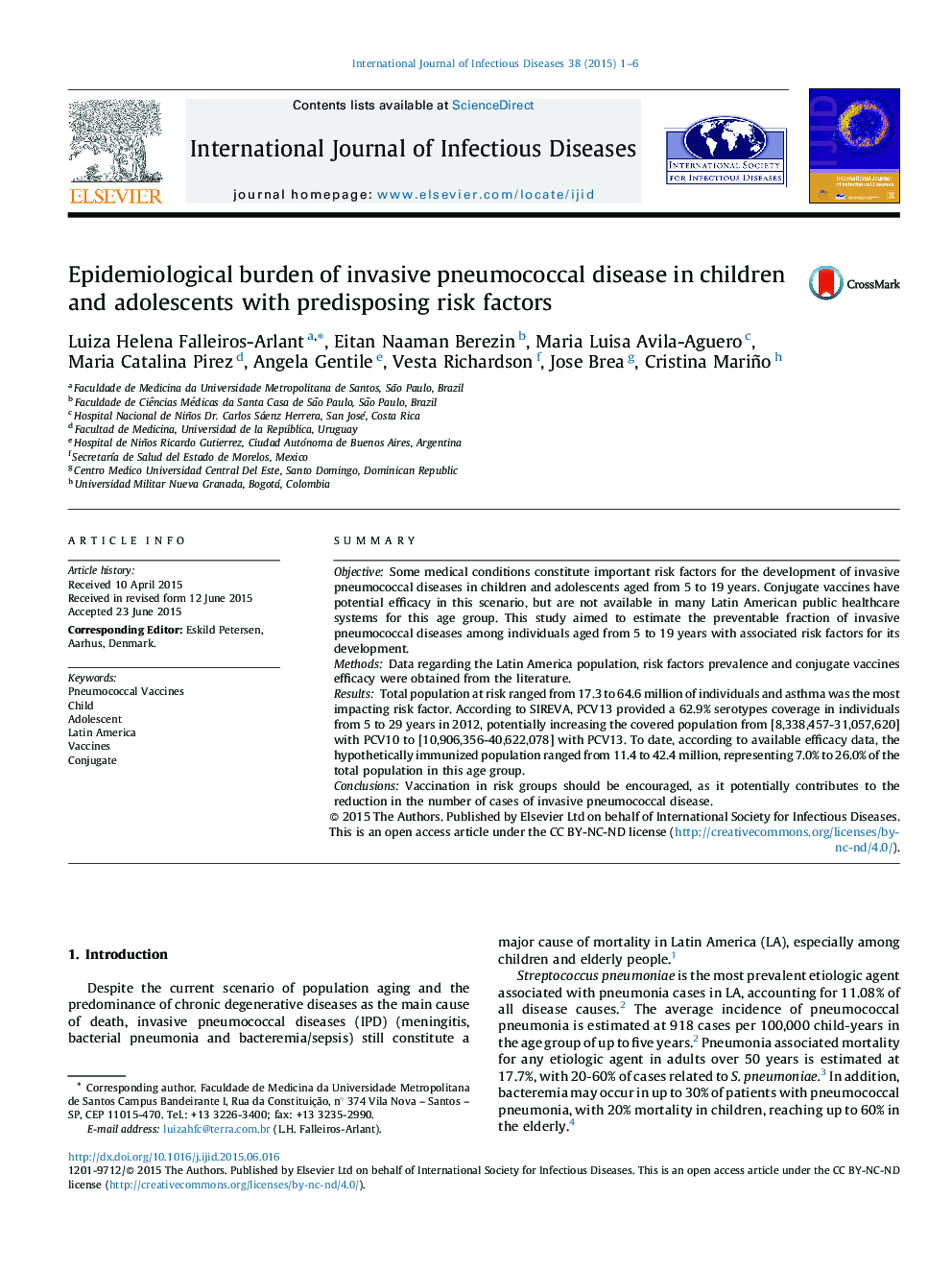| Article ID | Journal | Published Year | Pages | File Type |
|---|---|---|---|---|
| 3361983 | International Journal of Infectious Diseases | 2015 | 6 Pages |
•Total population at risk ranged from 17.3 to 64.6 million.•According to SIREVA 2012, PCV13 offered a 62.9% coverage in Latin America.•Potentially covered population was 10,906,356-40,622,078 with PCV13.•Hypothetical immunized population ranged from 11.4 to 42.4 million, approximately.•Vaccinating against IPD in high-risk individuals is a major opportunity.
SummaryObjectiveSome medical conditions constitute important risk factors for the development of invasive pneumococcal diseases in children and adolescents aged from 5 to 19 years. Conjugate vaccines have potential efficacy in this scenario, but are not available in many Latin American public healthcare systems for this age group. This study aimed to estimate the preventable fraction of invasive pneumococcal diseases among individuals aged from 5 to 19 years with associated risk factors for its development.MethodsData regarding the Latin America population, risk factors prevalence and conjugate vaccines efficacy were obtained from the literature.ResultsTotal population at risk ranged from 17.3 to 64.6 million of individuals and asthma was the most impacting risk factor. According to SIREVA, PCV13 provided a 62.9% serotypes coverage in individuals from 5 to 29 years in 2012, potentially increasing the covered population from [8,338,457-31,057,620] with PCV10 to [10,906,356-40,622,078] with PCV13. To date, according to available efficacy data, the hypothetically immunized population ranged from 11.4 to 42.4 million, representing 7.0% to 26.0% of the total population in this age group.ConclusionsVaccination in risk groups should be encouraged, as it potentially contributes to the reduction in the number of cases of invasive pneumococcal disease.
